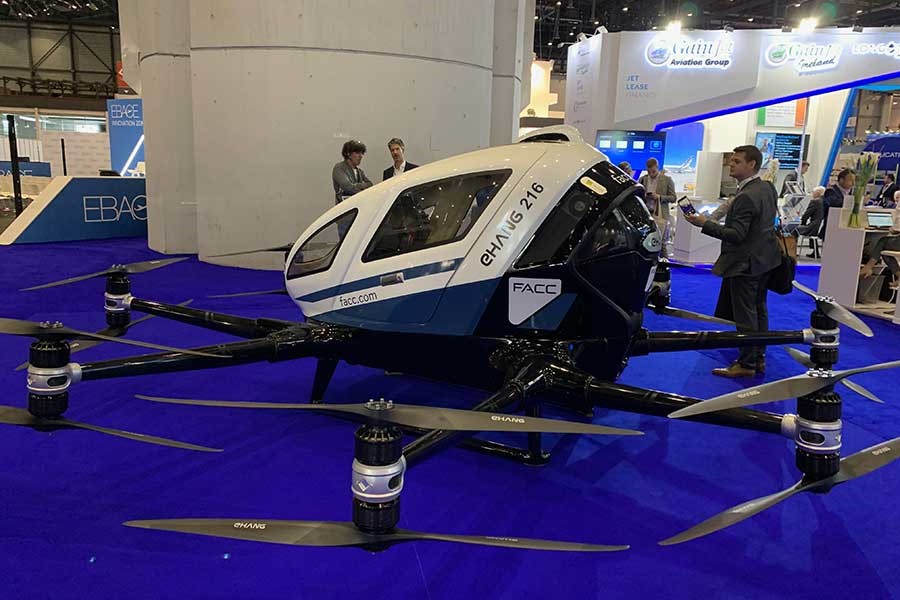

UAM relies on the gain in technologies such as distributed electric propulsion, new business models such as application-based ride-sharing, and trends in advanced aerospace manufacturing that will reduce production costs. It proposes highly affordable, accessible, and fast urban air transit, which would reduce ground-based congestion by off-loading the existing roadways transportation infrastructure. Urban Air Mobility (UAM) is a transportation concept that has the potential to reconstruct societal mobility.
#URBAN AIR MOBILITY FREE#
Get more information on this report : Request Free Sample PDFĪviation and Autonomous Driving Technology AdvancementsĪdvances in aviation technologies are creating the potential to provide convenient and efficient on-demand transportation for people and cargo in metropolitan areas. Lucrative Regions in Urban air mobility Market Increasing demand for electric urban air mobility, and increasing population, and increasing need for a vehicle that helps in traffic congestion in the region have been bolstering the growth of the global urban air mobility market. Based on fuel type, the urban air mobility market is segmented into Diesel, Petrol, CNG, LPG, and Electric. The global urban air mobility market is segmented by type into passenger carrier and goods carrier. This does not consider the millions of injuries incurred in non-fatal accidents. According to the World Health Organization (WHO), roughly 1.25 million people are killed in car accidents each year, reaching to about 3,400 deaths per day. Furthermore, car accidents have surged, along with increasing vehicle ownership in developing countries such as India and China. Environmental Protection Agency estimated an average passenger car emits 4.7 metric tons of carbon dioxide each year.
#URBAN AIR MOBILITY DRIVERS#
drivers approximately US$ 305 Bn in 2017, implying an average of US$ 1,445 per driver. It also mentioned that traffic congestions had cost U.S. commuter spends approximately 41 hours in traffic each year during peak congestion times. For example, according to INRIX (a traffic analysis firm), a U.S. As the world’s urban population grows, traffic congestion has been seriously affecting people’s quality of life and taking a toll on general economic growth. Increasing traffic congestions in urban cities is major factor driving the market growth. In rural areas, more than six passengers travel by three-wheeler passenger carriers as per requirement. Ī minimum of three and a maximum of five-six passengers can travel by urban air mobility passenger carriers. The Urban Air Mobility market is expected to grow at a CAGR of 17.5% during the forecast period of 2025 to 2034.

The urban air mobility market is expected to valued at US$ 6,384.9 Million and is projected to reach US$ 23,250.3 Million by 2034. Minimally Invasive/Non-Invasive Surgery.Aerospace & Defense Systems & Technologies.The paper concludes with recommendations for future research on sustainability, social and economic impacts, airspace integration, and other topics. UAM also could be limited by infrastructure and airspace management needs, as well as business model constraints. In the future, UAM could face several barriers to growth and mainstreaming, such as the existing regulatory environment community acceptance and concerns about safety, noise, social equity, and environmental impacts. The history, current developments, and anticipated milestones of UAM can be classified into six phases: 1) “flying car” concepts from the early 1910s to 1950s, 2) early UAM operations using scheduled helicopter services from the 1950s to 1980s, 3) re-emergence of on-demand services starting in the 2010s, 4) corridor services using vertical take-off and landing (VTOL) envisioned for the 2020s, 5) hub and spoke services, and 6) point-to-point services. This research employed a multi-method approach comprised of 106 interviews with thought leaders and two stakeholder workshops to construct the history, ecosystem, state of the industry, and potential evolution of UAM. Urban air mobility (UAM) envisions a safe, sustainable, affordable, and accessible air transportation system for passenger mobility, goods delivery, and emergency services within or traversing metropolitan areas. Emerging innovations in electrification, automation, and other technologies are enabling new opportunities for on-demand air mobility, business models, and aircraft design. Since the early 20 th century, inventors have conceptualized “plane cars” and other urban aerial transportation.


 0 kommentar(er)
0 kommentar(er)
